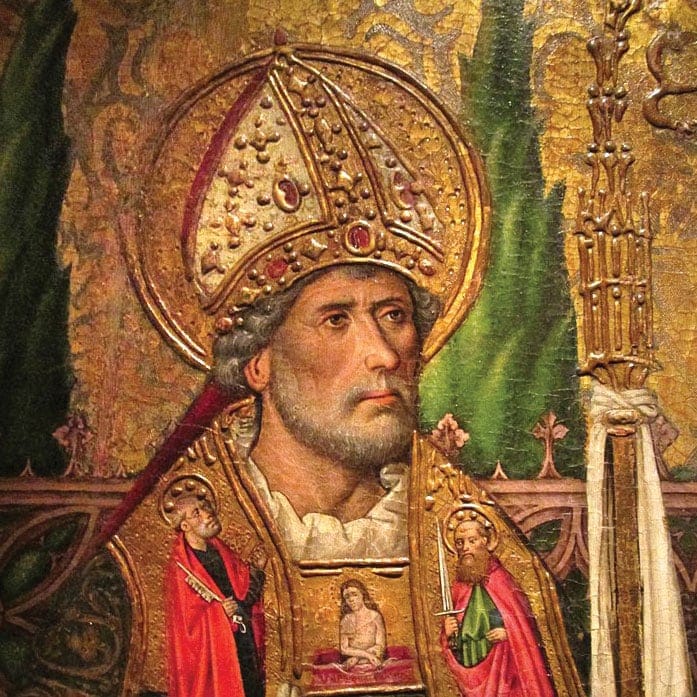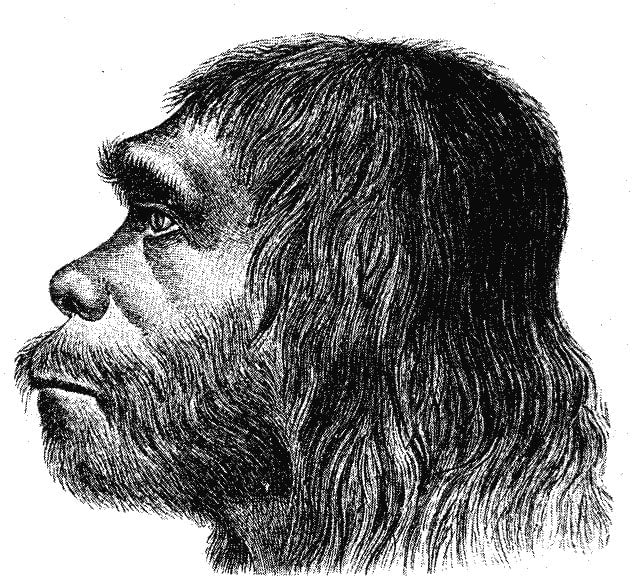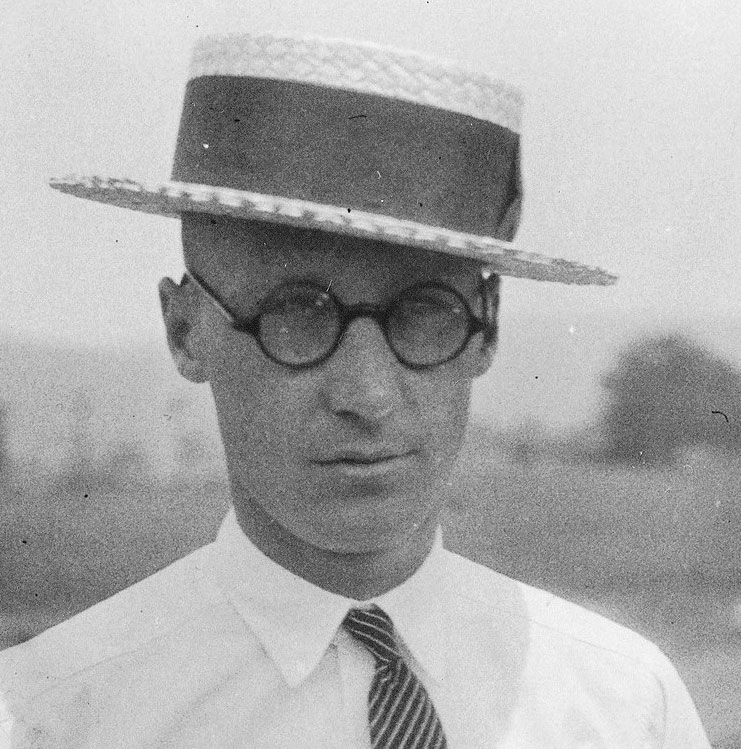- Fifteenth century B.C. Moses, Egyptian-born Hebrew, authors the book of Genesis, becomes historian of Creation through reception and communication of divine revelation

- Fifth century B.C.–B.C. ff Speculation of ancient Greek philosophers about naturalistic origins of matter and life, spontaneous generation of life forms through the interaction of material elements.
- 354–430 Teachings of Christian thinker Augustine of Hippo: God cannot be said to have created the universe in time; rather, God created the universe with time; God brought everything into existence in a single moment of creation: not a static creation, but endowed with the capacity to develop.
- 1485 Christian theologian Thomas Aquinas (c. 1225–1474): writes Summa Theologiae, his five proofs of God’s existence known as the Five Ways.
- 1735 Swedish naturalist Carolus Linnaeus proposes new naming system for organisms, consisting of a binomial nomenclature, or the naming of species with two names (e.g., Homo sapiens for humans).
- 1749 French naturalist Georges Buffon suggests that species change over time, but rejects the idea that this change can originate new species.
- 1788 Scottish geologist James Hutton publishes Theory of the Earth; suggests that past geological processes operated very slowly, as they do in the present; the thickness of exposed rock layers therefore indicates long periods of time (deep time).
- 1794–1796 English physician Erasmus Darwin publishes Zoonomia, posits that all warm-blooded organisms derive from common ancestor; anticipates “survival of the fittest” idea.
- 1798 English economist Thomas R. Malthus, in his book An Essay on the Principle of Population, argues that human populations grow faster than resources, causing competition for food in which the lower class suffers hardship, famine, and disease more than the upper class.

- 1802 English clergyman and philosopher William Paley argues, in Natural Theology, that God’s design of the whole creation is evident in the complexity of the natural order of things.
- 1809 French naturalist Jean-Baptiste Lamarck publishes theory of evolution in which change occurs through inheritance (or use/disuse) of acquired characteristics passed on to next generation.
- 1813 French naturalist Georges Cuvier explains geological record as not continuous but marked by periodic extinctions caused by catastrophic floods; most recent and dramatic was Noah’s, after which the earth was repopulated by migration of animals that survived in protected areas.
- 1830 English naturalist Charles Lyell: popularizes uniformitarianism—earth’s geologic features better explained by action of slow, continuous, and uniform processes over deep time; also, earth is more than 6,000 years old.
- 1831 English naturalist Charles Darwin begins trip on the Beagle around the world, to study nature and collect samples; spends almost five years surveying the coasts and inland areas of South America, the Galapagos Islands, New Zealand, and Australia.
- 1856 First bones of what was labeled Neanderthal man unearthed in the Neandertal Valley in Germany.
- 1858 English naturalist Alfred Wallace independently conceives theory of evolution by natural selection; publishes paper at the same time as Darwin.
- 1859 Charles Darwin publishes On the Origin of Species; key idea: all organisms evolved from common ancestor through variations and natural selection.
- 1868 German zoologist Ernst Haeckel applies Darwinian theory of evolution to embryology.
- 1871 Charles Darwin publishes The Descent of Man; argues that humans evolved from apes; book in which Darwin first uses the term “theory of evolution” to designate species change.
- 1870s North American evangelists (e.g., Dwight L. Moody) launch attack on theory of evolution, arguing that it contradicts biblical truth.
- 1920s Conservative Christian leaders: public momentum against teaching evolution in classrooms.

- 1925 In State of Tennessee v. Scopes public school teacher John Scopes is convicted of teaching evolution, violating state ban on the practice; conviction is later overturned on legal technicality.
- 1929 North American astronomer Edwin Hubble finds convincing evidence of expanding universe, clearly indicating that universe is finite in both time and space; universe had a beginning.
- 1958 Geoscience Research Institute (Adventist research institute) is founded to investigate scientific issues related to creation, origins, faith, and science.
- 1961 North American engineer Henry Morris and theologian John Whitcomb publish The Genesis Flood, a book that presents arguments in support of the literal meaning of the Flood account in the Bible; sparks interest in geosciences from a creationist perspective.
- 1968 In Epperson v. Arkansas U.S. Supreme Court rules as unconstitutional Arkansas state law banning public academic teaching of evolution.
- 1970 Institute for Creation Research is founded near San Diego to conduct scientific research within the context of biblical creation.
- 1974 Geoscience Research Institute publishes first issue of scientific journal Origins.
- 1981 United States establishes National Center for Science Education to advocate for teaching evolution in public schools.
- 1982 First issue of Ciencia de los Orígenes (Science of Origins) is published by the Geoscience Research Institute.
- 1982 In McLean v. Arkansas Board of Education a federal court in Arkansas strikes down law mandating creation science teaching in public schools alongside evolution.
- 1985 Australian biochemist Michael Denton publishes Evolution: A Theory in Crisis, first major book presenting scientific attack on theory of evolution.
- 1986 First International Conference on Creationism is held in Pittsburgh, Pennsylvania; organized by the Creation Science Fellowship, Inc.

- 1987 In Edwards v. Aguillard U.S. Supreme Court rejects as unconstitutional Louisiana law prohibiting the teaching of evolution in public schools if creation science is not taught alongside it.
- 1990s Intelligent Design (ID) theory is formulated by scientists as refutation of Darwinian theory of biological evolution; theory is based on existence of functional parts and systems in living organisms that could not have arisen by naturalistic means, but would require the intervention of an intelligent Designer.
- 1991 Philip Johnson, University of California, Berkeley, law professor, publishes Darwin on Trial, anincisive critique of theory of evolution.
- 1994 Answers in Genesis (AiG) established as apologetics ministry to defend Christian faith; heavy emphasis on origins.
- 1996 Lehigh University biochemist Michael Behe publishes Darwin’s Black Box—The Biochemical Challenge to Evolution;presents biochemical limits of evolution, helps launch ID movement.
- 1997 Loma Linda University biologist Leonard Brand publishes Faith, Reason, and Earth History; provides ideas and models for history of life and planet within framework of short age and creation.
- 1999: In Freiler v. Tangipahoa Parish (Louisiana) Board of Education a federal appeals court strikes down a Louisiana law requiring public school teachers to read a disclaimer urging students to question evolutionary theory.
- 1999: Kansas State Board of Education ruling supporting teaching evolutionary biology, but not its inclusion in statewide standardized science tests; ruling triggers wider debate over state science standards.
- 2002–2004 Adventist Church organizes multiple regional and global conferences on faith and science.
- 2005: Kansas State Board of Education allows ID to be presented as alternative explanation to evolution.
- 2005 In Kitzmiller v. Dover Area School District a U.S. federal district court strikes down Dover (Pennsylvania) school board’s requirement that term “ID” be mentioned in public high school biology curriculum.
- 2006 In Selman v. Cobb County School District a U.S. federal court rejects as unconstitutional Cobb County (Georgia) school board’s requirement to affix a note to public school biology textbooks instructing students to think critically about evolutionary theory.
- 2006 Adventist Church establishes Faith and Science Council to sponsor relevant research in subjects related to origins; meets twice a year to study matters dealing with the interrelationship and intersection of science and the Bible.
- 2007: 2005 Kansas board decision is struck down
- 2014 ByDesign Science textbooks for grades 1-8 are published by Kendall Hunt Publishing and North American Division Office of Education of the Adventist Church.
- Today God, the Creator, states: “if anyone is in Christ, the new creation has come” (2 Cor. 5:17, NIV)
- Tomorrow God, the Creator, promises: “I will create new heavens and a new earth. The former things will not be remembered, nor will they come to mind (Isa. 65:17, NIV).”
Raul Esperante is a research scientist at the Geoscience Research Institute, Loma Linda, California, United States.




